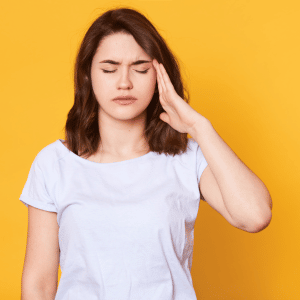
What Is Vestibular Therapy? Vestibular therapy, or vestibular physiotherapy as it is often referred to, is a form of treatment that aims to address primary and secondary problems related to vestibular pathology. This means that vestibular therapy can help those who are experiencing symptoms directly from a problem with the vestibular system (BPPV, Ménière’s disease, vestibular neuritis, etc.) or experiencing symptoms due to another condition affecting the vestibular system (migraines, ear infections, etc.). What Is The Vestibular System? Basically, vestibular therapy aims to help problems with our vestibular system. This system is also known as the ‘system of balance’. Its main components are actually found in the inner ear, consisting of a complex interconnected system named the ‘vestibular labyrinth’ – our semicircular canals, otolith organs, and receptors for all the sensations of balance that come in through the ear. These sensations get sent to the brainstem, the parts of the brain that control active movements of the body, and even to the eyes. When our inner ear works well, we are able to balance ourselves well, even when external forces are placed against us (e.g. walking on a wobbly surface, or righting ourselves after tripping over a rock). When this system is damaged, we have difficulty controlling our eye movements when our head is moving, and our sense of balance becomes negatively affected, especially when we change positions suddenly – from sleeping, to sitting up, or from lying down to standing up. There are several clinical assessments like the Epley’s manoeuvre that can be done in our initial consultation session, which can help to identify whether you have a true vestibular problem that requires a visit to the ENT, or whether it is one of the kinds of conditions which our physiotherapists can treat in the clinic itself. Can...
 In Summary the TL;DR: BIXEPS is a fitness and wellness device that uses the principle of pulsed electromagnetic fields to create magnetic mitohormesis – ‘healthy stress’ on our mitochondria to improve their function in our body. This is important because all cells need mitochondria to generate energy, move, grow, and prevent excessive oxidative stress which leads to accelerated degeneration. Backed by research, it has been shown to stimulate growth of new mitochondria, increase myokine production, and encourage higher production of ATP/energy in our cells. This results in increased muscle mass, better regulated inflammation for pain, improved recovery times, and better muscle energetics in both elderly and active people. Message Us To Find Out More BIXEPS is a patented technology by Singapore’s NUS and Switzerland’s ETH Zurich, after years of scientific research into how electromagnetic fields can successfully activate mitochondria in our bodies. We might remember from a distant memory of studying Biology or Science in our youth that mitochondria are known as ‘the powerhouse of the cell’ – but what implications does it have in pain and muscle recovery? Here’s the science behind how BIXEPS works: Mitochondria are cell organelles that generate chemical energy needed for all parts of our bodies to function. Without oxygen, our lungs and brains would not be able to survive. Without mitochondria generating energy in our bodies, we would not be able to grow, move, and maintain our body functions. These mitochondria are present in nearly ALL cells of our body (with the exception of red blood cells). In our muscles, mitochondria play an important function of maintaining our muscle mass and strength. Declines in skeletal muscle mitochondria play a role in progressive loss of muscle mass and muscle strength as we age, as something called ‘mitochondrial...
In Summary the TL;DR: BIXEPS is a fitness and wellness device that uses the principle of pulsed electromagnetic fields to create magnetic mitohormesis – ‘healthy stress’ on our mitochondria to improve their function in our body. This is important because all cells need mitochondria to generate energy, move, grow, and prevent excessive oxidative stress which leads to accelerated degeneration. Backed by research, it has been shown to stimulate growth of new mitochondria, increase myokine production, and encourage higher production of ATP/energy in our cells. This results in increased muscle mass, better regulated inflammation for pain, improved recovery times, and better muscle energetics in both elderly and active people. Message Us To Find Out More BIXEPS is a patented technology by Singapore’s NUS and Switzerland’s ETH Zurich, after years of scientific research into how electromagnetic fields can successfully activate mitochondria in our bodies. We might remember from a distant memory of studying Biology or Science in our youth that mitochondria are known as ‘the powerhouse of the cell’ – but what implications does it have in pain and muscle recovery? Here’s the science behind how BIXEPS works: Mitochondria are cell organelles that generate chemical energy needed for all parts of our bodies to function. Without oxygen, our lungs and brains would not be able to survive. Without mitochondria generating energy in our bodies, we would not be able to grow, move, and maintain our body functions. These mitochondria are present in nearly ALL cells of our body (with the exception of red blood cells). In our muscles, mitochondria play an important function of maintaining our muscle mass and strength. Declines in skeletal muscle mitochondria play a role in progressive loss of muscle mass and muscle strength as we age, as something called ‘mitochondrial...







